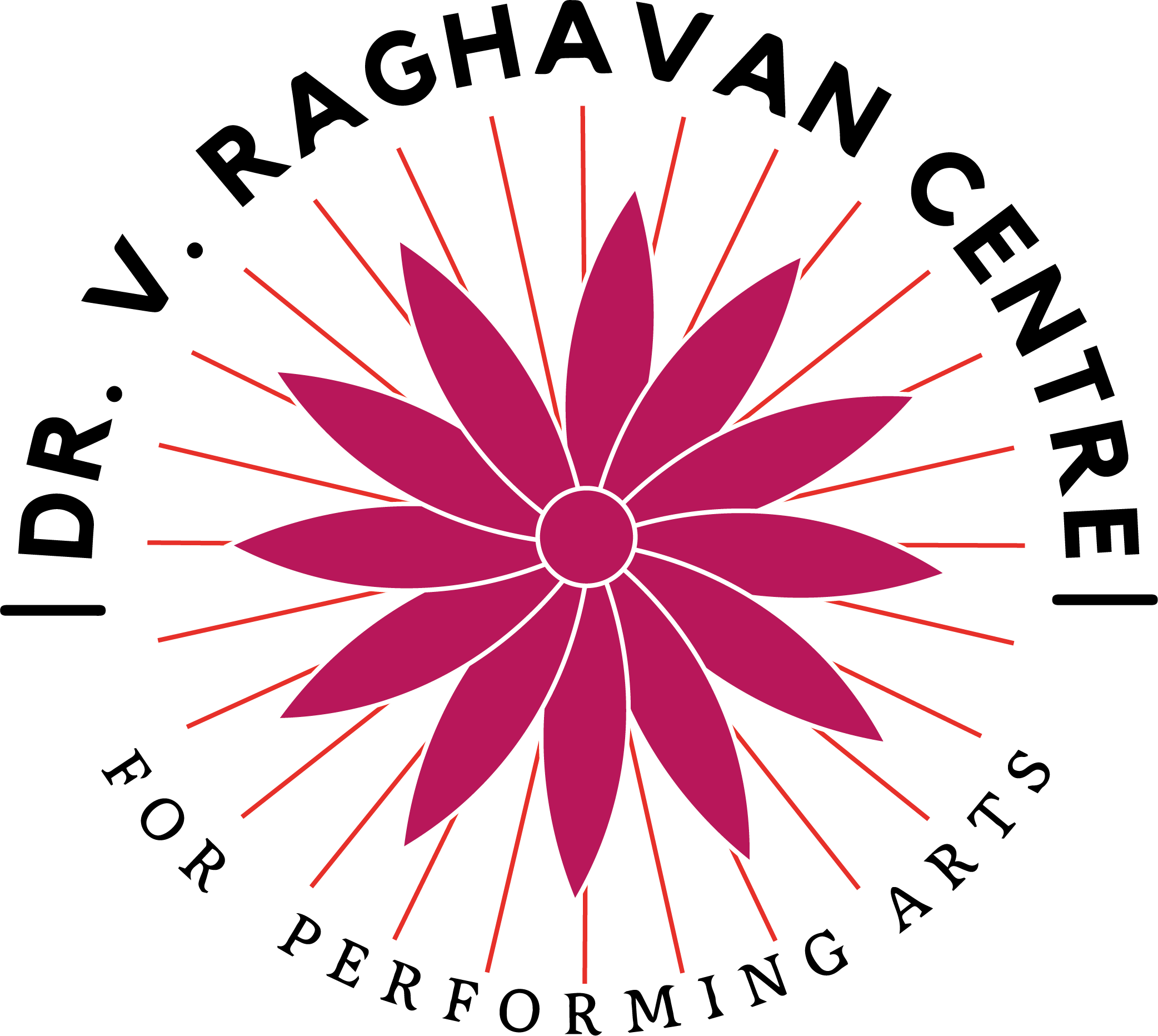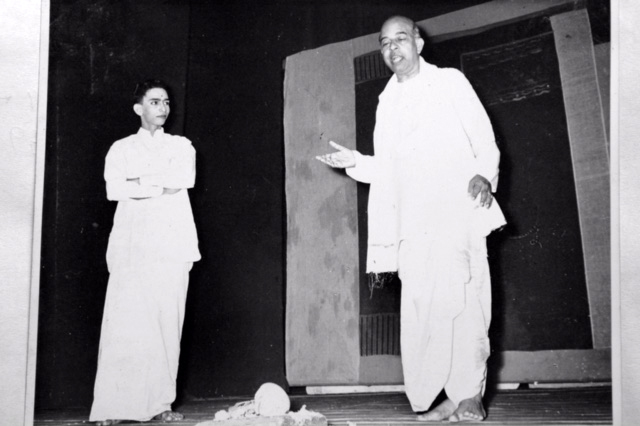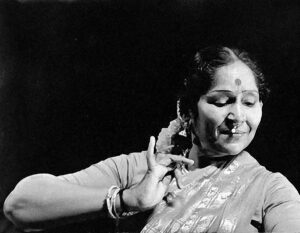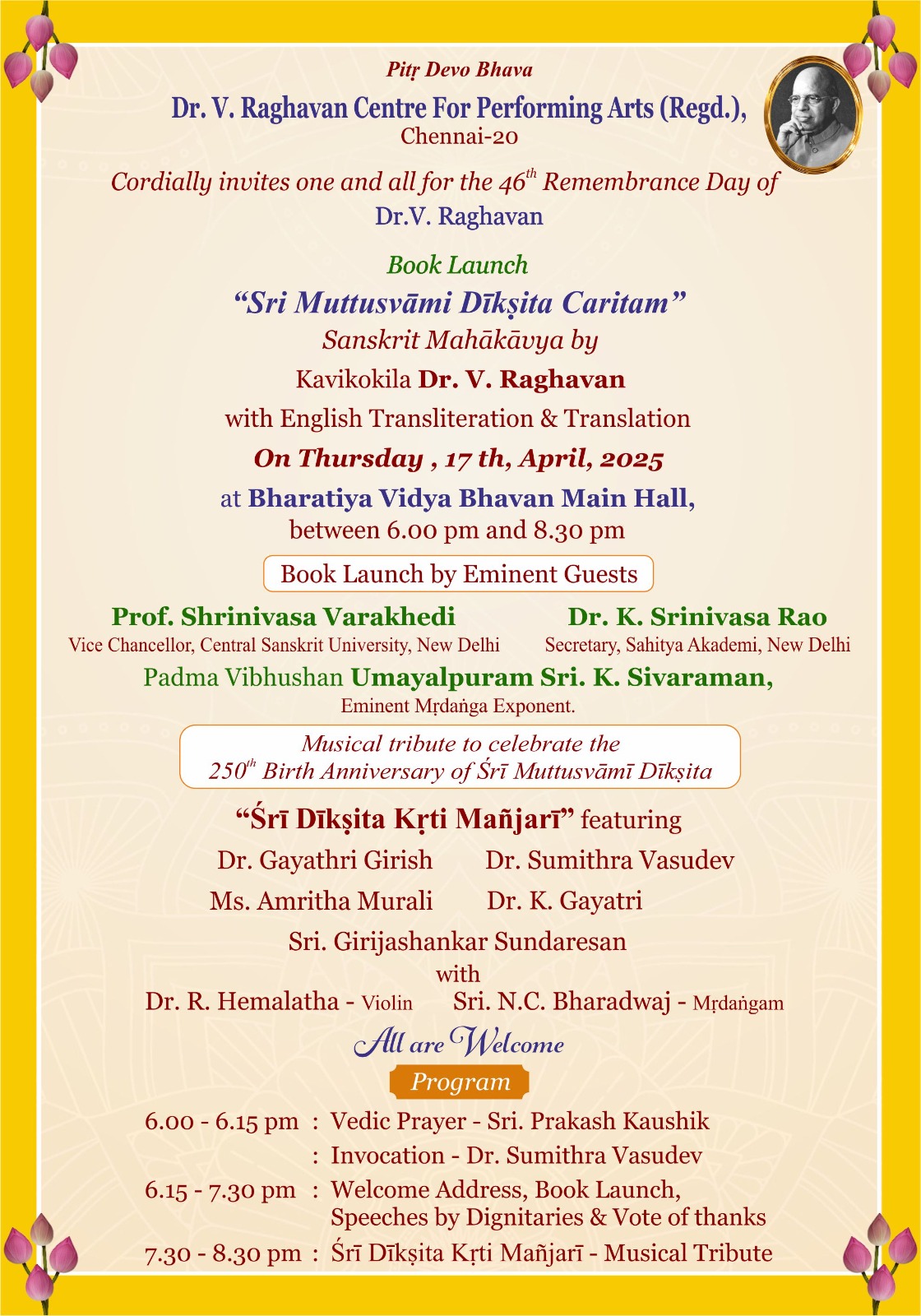Dr. Raghavan’s interest in fine arts began, as mention earlier, right from his very early age, when he grew up in his maternal uncle’s house in Tiruvarur engaging himself in Bhakti poetry, elevating Bhajana traditions, and enlightening Harikatha expositions. The multi-faceted art of Harikatha had a great impact on young Raghavan. As a student of the The Presidency College, he had opportunities to enact and direct Sanskrit plays. As early as in the 1930s, he wrote film and play scripts and regularly contributed on different topics of interest to well-known Tamil magazines. He was a gifted poet and dramatist and his involvement in Sanskrit Drama production and enactment gave him great satisfaction as a fine aesthete, enjoying the culmination of the Rasas in that process.
Raghavan’s association with Tamil stage troops of T.K.S. Brothers, S.V. Sahasranamam, Kripa Amateurs, Young Men’s Association & Viveka Fine Arts of Cho S. Ramaswamy started from the very beginning of those; their productions were regularly witnessed by him along with his family members. Often times, at the end of the play Raghavan used to provide his observations to these theatre experts like Sri. T.K. Shanmugam, Dr. C. Raghavachari, Sri. Y.G. Parthasarathi, Sri. Y.G. Pattu and Sri. Cho. Ramaswamy. Often he used to explain the similarities or the variations to the existing and well known themes elsewhere.
Raghavan wrote enormously on this subject which later was published in book form for the benefit of the students and researchers in that field. In 1958, the idea to form an association named the “Samskrita Ranga” at a momentous occasion came up when he produced and staged Kalidasa’s Malavikagnimitram in Delhi. With a group of enthusiastic actors and lovers of Sanskrit Drama, Raghavan founded and established the Samskrita Ranga, a forum of Sanskrit drama, well envisaged for a continuous bright future. Thanks to his efforts and foresight, the Ranga has successfully continued the dramatic pursuits conceived by him for the past 54 years.
Dr. Raghavan, a multi-faceted personality truly qualifies the traditional requisites laid down for a dramatist. Equally so are his productions which have served and continues to serve as ideal examples laid down by the great Abhinavagupta. Raghavan’s own play “Anarkali” is in ten acts and is an exquisite rendering of the story of Salim and Anarkali; this play of Raghavan received much acclaim and two Prestigious Awards from the Uttar Pradesh and Madhya Pradesh Governments for Best Creative Writing in that field. Raghavan has penned the sensitive love story in an elevating and soulful poetic style, based on the age-old love story handed down through generations of oral tradition, while providing the story with exhaustive researched material, well accumulated into the dramatic stream. His own creative and imaginative touch is extended to the theme by adding certain beautiful incorporations like “Anarkali” being trained in Bharatnatyam in Akbar’s Court and Acarya Pundarika Vittala (the author of the treatise Nartana Nirnaya), conducting the Bharatanatya recital of Anarkali, during which the well known scene of her interaction with Salim in the process takes place. Thus Raghavan’s creative mind brings in a beautiful synthesis of the Southern tradition of dance getting mingled in a Northern cultural setup, much to the joy and pleasure of the actor and the Sahrdaya. Similarly there is also the auspicious touch to the conclusion of the play, in line with the principles of Sanskrit Drama; Raghavan has added a surprise twist to the otherwise sad love story by giving Anarkali as a birthday gift to Salim and thereby ending the play on an happy note.
Notable among some of his short palys are Vimukti, Vidyanatha Vidambana, Preksanakatrayi and Punarunmeesah. Among his adapted plays Valmiki Pratibah and Nati Puja of Tagore are noteworthy, for their exquisite Sanskrit translation from the Bengali original. These two plays are hailed for their “revealing accuracy of idea, appreciation of the spirit of the Bengali language, simplicity and melody”, by none other than the renowned Professor Suniti Kumar Chatterji and Sri Srijiva Nyayatirtha.
Raghavan made best use of his role as producer of Sanskrit magazine programs in the All-India Radio (AIR) to propagate and nurture the interest of the Sanskrit loving listeners of the radio. He wrote and produced Sanskrit plays, sometimes even acted in them, as in Nati Puja, enacting the role of Sage Upali or Sage Kanva in Sakuntalam. Among his original dramas for the AIR, Mahasweta, Asadhasya Prathama Divase (based on Kalidasa’s Meghadutam), Lakshmi Swayamvaram (based on the Bhagavata legend of churning the milky ocean), Kamasuddhi (based on Kumarasambhava) and Rasa Leela (based on Bhagavata) were aired, winning wide appreciation and critical acclaim.
Raghavan also wrote Tamil plays with historical and social backgrounds. Kamadahanam, Ragakkolai, Bharya Vijayam, Vadyeswari Veenai, Gangai Konda Chozhan, Genious Appa, Caturananapanditar, Humayunum Babarum. In the plot of some of the plays, Raghavan has, as mentioned earlier, has been keeping in line with the tradition of Bharata and for that purpose some of these theme have been re-shaped for best expression of the concept of Rasa. His deep knowledge in Sanskrit Literature was best utilized in some of the plays like the Preksanakatrayi where the plot has been woven around the scholarly contributions of the characters involved therein.
The aspects of training, which involves the delivery of dialogue (Pathya), in accordance with Bharata, was one of the highlights under the expert guidance and direction of Raghavan. The voice modulation, the bodily movements, eyes following the action are all some very finely nuanced approaches used by actors of Samskrita Ranga until today, as per the prescriptions of Raghavan. Himself being an expert Musicologist, he applied his keen musical acumen to present a very refined musical set-up for his place, thus underlining the crucial bond between Music and Mind in such productions. Music was an integral part of all his productions and some of the musical legends and experts of his times were invited to participate and contribute in a major way in this direction. Raghavan designed separate Music scheme. Apart from the appropriate background score, the songs (Dhruvas) of the play were used to reinforce or energize a particular situation or a mood as required for the play. The traditional instruments like the Venu,Veena and Mrdanga formed the main stay of the orchestra.
During his life-time, Raghavan produced and directed about 50 plays and staged them annually in Madras as well as in Ujjain Kalidas Samaroh and other prestigious venues. In his earlier productions, Raghavan created several original and appealing stage props to bring in the right mood and ambience; his eschewal of the elaborate scenic arrangements, promoted the power of the word (vachika), bodily action (angika), the mental state (saatvika) and the movement (parikramana).
As part of his involvement in Theatre, Raghavan also took keen interest in writing scripts for Cinema; the first-ever Talkie-Cinema, Sita Kalyanam, had dialogues penned by him and for that reason he traveled to the shooting spot at Kolhapur in the early 30’s; in fact he was instrumental in bringing to notice of well-known movie producers, the musical dramatic talent of the renowned Musician–Composer Papanasam Sivan, who again was a close associate of the family, and supported right from his young age by the maternal uncle of Raghavan at Tiruvarur.
He had written also the screen story and dialogue in Tamil for the Talkie Chapalaa, while he was a student in the Madras Presidency College studying Sanskrit under Prof. Mm. Kuppuswami Sastrigal. The payment he received for this assignment was Rs.35 which he utilized to buy a Table and Chair from M/s. Curzon & Co., that he used throughout his lifetime. Starting from his Ph.D. thesis to his 1200 and odd articles and over 120 books were written from this table and chair.
Raghavan saw few movies along with his family Members which were mostly classics of those times like Gemini’s Chandralekha and Avvaiyar, Baiju bawra, Jahanak Jahanak Payal Baaje, Yukivarisu, Stree and Navrang of Sri. Santharam, renowned actor-director of Hindi films whom Raghavan knew personally; in the movie Mughal-E-Azam, based on the love-story of Salim and Anarkali, Sri. Prithiviraj Kapoor, who acted as Emperor Akbar wanted Raghavan to recite the inaugural Benedictory verses, which did not materialize for some reason. English movies like An Ivory Hunter, 20,000 leagues under the sea and My Fair lady were enjoyed by him. Stri and Mughal-E-Azam were of great interest to him, as the first one dealt with Poet Kalidasa’s Sakuntalam and the latter followed theme of his own award winning creative writing in Sanskrit on the story of Salim and Anarkali.
– By Nandini Ramani




